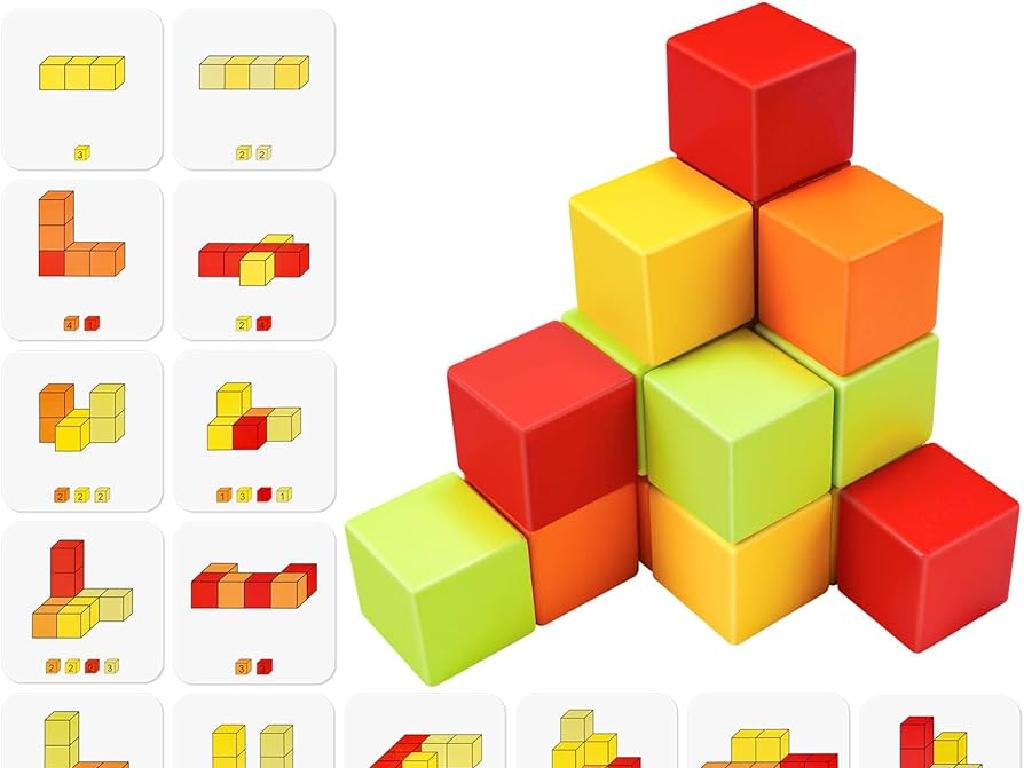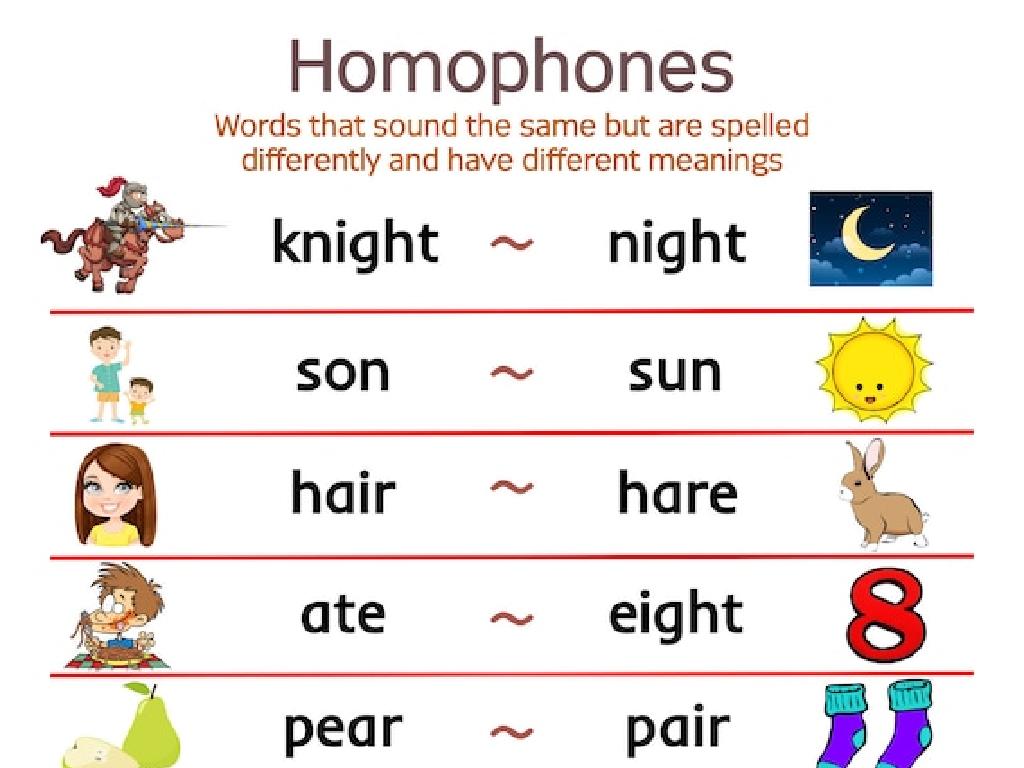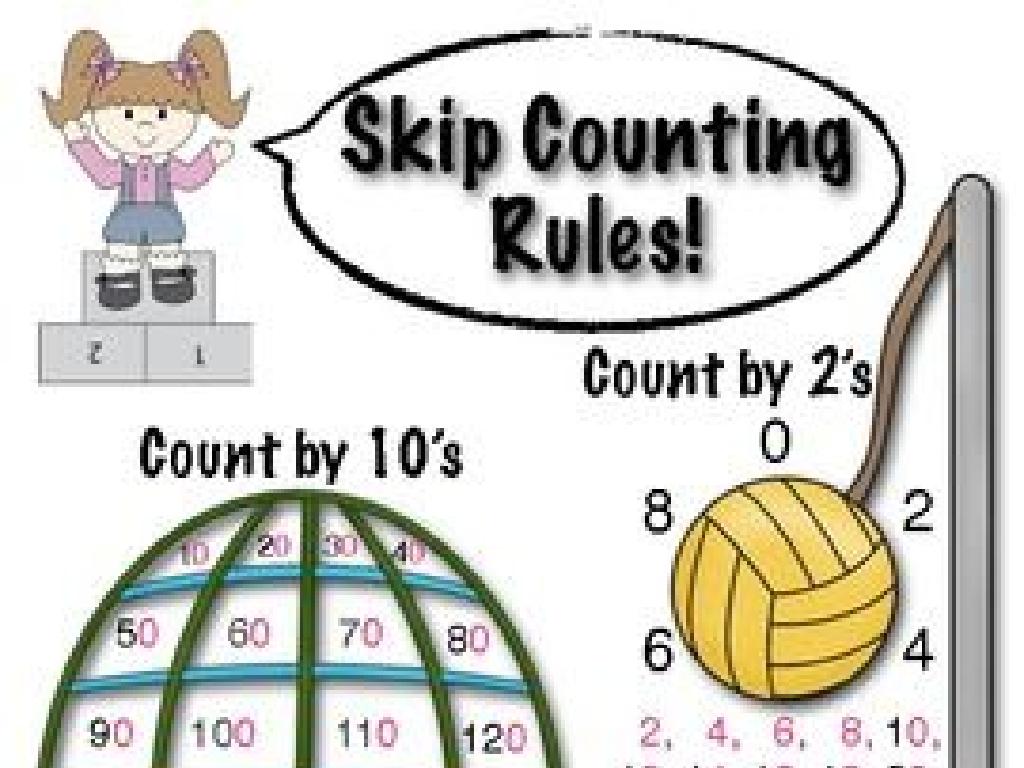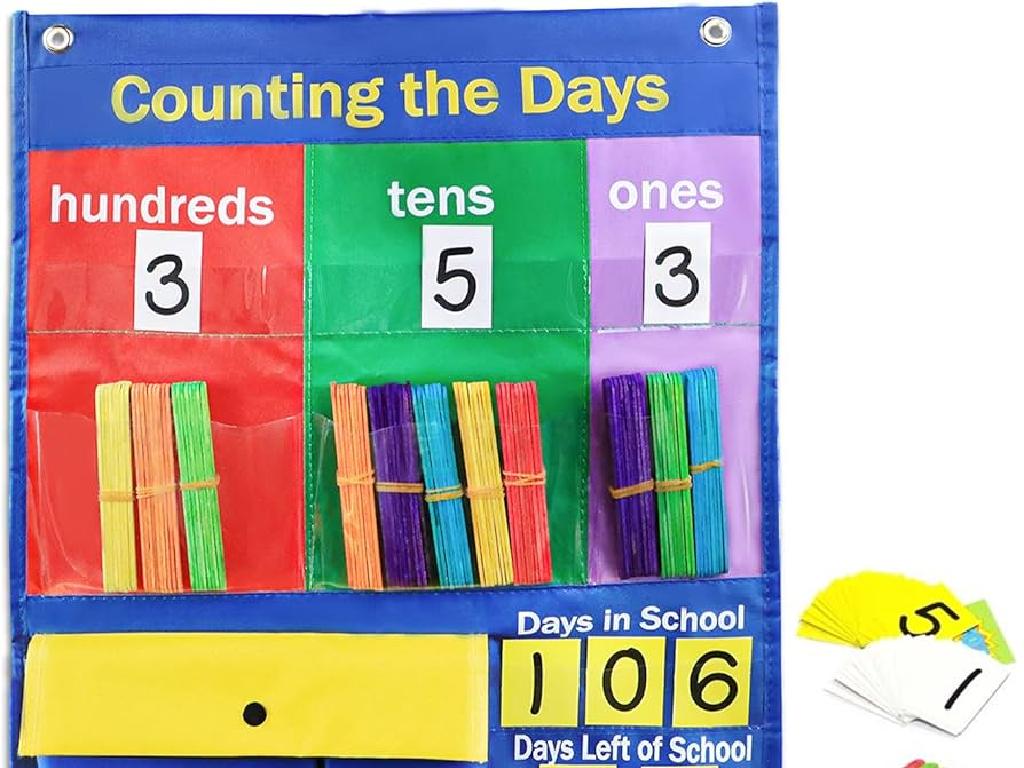Interpret Bar Graphs I
Subject: Math
Grade: Second grade
Topic: Data And Graphs
Please LOG IN to download the presentation. Access is available to registered users only.
View More Content
Understanding Bar Graphs
– What is a bar graph?
– A chart that shows numbers as bars of different heights
– Reading data on bar graphs
– Look at the bars and see how tall they are to know the numbers
– Interpreting data from graphs
– Think about what the numbers and bars tell us
– Importance of graphs
– Graphs help us understand lots of information quickly
|
This slide introduces second-grade students to the concept of bar graphs. Begin by explaining that a bar graph is a visual way to show numbers and data with bars of different heights. Show them how to read the height of each bar to understand the quantity it represents. Discuss with the students how we can interpret this data to make sense of information, such as finding out which is the most popular fruit in class or how many books were read in a month. Emphasize the importance of graphs in everyday life, such as in making decisions, comparing quantities, or understanding trends. Encourage students to think of situations where graphs are used, like in weather reports or keeping score in sports.
Understanding Bar Graphs
– Bar graphs display data visually
– It’s like a picture of numbers!
– They make comparing amounts easy
– See which is more or less at a glance
– Each bar stands for an item
– One bar could represent apples, another oranges
– Bars can show different categories
|
This slide introduces students to the concept of bar graphs as a visual tool for representing data. Explain that bar graphs use bars of different lengths to show numbers so we can see and compare amounts quickly and easily. Each bar on the graph represents a different item or category, making it simple to compare things like how many apples are sold versus oranges. Use examples like comparing the number of sunny days to rainy days in a month or the amount of different types of candy in a jar. Encourage students to think of bar graphs as a picture that shows information with bars of different heights or lengths.
Parts of a Bar Graph
– Title explains the graph’s topic
– Labels show what each bar represents
– Bars indicate the quantity of items
– Taller bars mean more items; shorter bars mean fewer items
– Scale shows the value of each unit
– Scale might go up by 1s, 2s, 5s, or 10s, depending on the graph
|
This slide introduces the basic components of a bar graph to second-grade students. The title of a bar graph gives us an idea of what information the graph will provide. Labels are important as they tell us what each bar stands for, such as different types of fruits or colors. The height or length of the bars shows us how many or how much of something there is; this is the quantity or amount. The scale along the side or bottom of the graph helps us understand the value of each unit, so we know exactly how many items each bar is counting. It’s essential to explain these parts clearly and use examples that are relatable to the students, such as a bar graph showing the number of apples, oranges, and bananas in a fruit basket, with the scale indicating the number of fruits.
How to Read a Bar Graph
– Understand the graph’s topic
– The title tells us what information the graph is showing.
– Know what each bar means
– Labels on the bars or the x-axis show what each bar stands for.
– Find out what each bar represents
– The scale on the y-axis shows the values that the bars are measuring.
– Compare the bar lengths
– Longer bars show more of something, shorter bars show less.
|
This slide is aimed at teaching second graders how to interpret bar graphs. Start by explaining that the title of the graph gives us the subject or the main idea of what the graph is about. Then, move on to the labels which help us identify what each bar represents, such as different types of fruits, animals, or days of the week. Next, discuss the scale, which is usually found on the side of the graph and helps us understand the value each bar represents, such as the number of items or people. Lastly, encourage the students to compare the lengths of the bars to determine which items are the most or least common. Use simple and relatable examples, such as a graph showing the number of different colored balloons, to make the concept clear and engaging for the students.
Let’s Practice: Favorite Fruits Bar Graph
– Examine the favorite fruits bar graph
– Identify the most liked fruit
– Look for the tallest bar to see which fruit is most popular
– Compare apple and orange preferences
– Count the difference in bar heights for apples and oranges
– Discuss findings with the class
|
This slide is a class activity designed to help students practice interpreting information from a bar graph. Present a simple bar graph that shows different amounts of students’ favorite fruits. Guide the students to look at the height of the bars to determine which fruit is the most popular. Then, help them compare the number of students who prefer apples to those who prefer oranges by looking at the difference in the heights of the bars representing each fruit. Encourage the students to share their answers and explain how they arrived at them, reinforcing the concept of using visual data to draw conclusions.
Creating Our Own Bar Graphs
– We will make our own bar graphs
– Think of a question for our survey
– What do you want to learn about our class?
– Collect data from classmates
– Ask your friends and write down their answers
– Fill in the bar graph with data
– Use colors to show different amounts on the graph
|
This slide is designed to engage second-grade students in a hands-on activity where they will create their own bar graphs. Start by explaining what a bar graph is and its purpose. Encourage students to think of a question they would like to ask their classmates something relevant and interesting to them, such as favorite fruits or pets. Once they have their question, they will gather answers from their peers. This data collection is a practical application of math skills. After collecting the data, students will use it to fill in a bar graph, which helps them visualize the information they’ve gathered. Teachers should prepare a simple bar graph template for students to use and provide colored pencils or crayons for filling in the graph. Possible activities include surveying favorite books, sports, or lunch foods.
Class Activity: Bar Graph Bonanza
– Group up and survey classmates
– Create a bar graph from survey data
– Use colors and labels for clarity
– Present your graph to the class
– Explain your graph’s story
– What does the data tell us?
|
This activity is designed to give students a hands-on experience with data collection and interpretation through bar graphs. Divide the class into small groups and have each group conduct a simple survey among their classmates. It could be about favorite fruits, pets, or hobbies. Each group will then create a bar graph based on their collected data, ensuring they label the axes and use different colors for clarity. Once completed, each group will present their bar graph to the class and explain what the data reveals. For example, ‘Our graph shows that more students like apples than bananas.’ This exercise will help students understand how bar graphs can be used to represent data visually and make it easier to interpret. Provide guidance on how to present data clearly and encourage students to ask questions about each other’s graphs.
Bar Graphs Mastery
– Congratulations on learning bar graphs!
– Now you can create your own bar graphs
– Collect data on favorite fruits, pets, or colors and display it
– Remember to label your graphs
– Include titles, and label each axis to explain what they show
– Share your data with clear visuals
– Use your graphs to tell a story about your data in class
|
This slide is a celebration of the students’ understanding of bar graphs. It’s important to reinforce the idea that they can now take information they gather and organize it into a bar graph, which is a valuable skill in math and daily life. Remind them of the importance of clear labels for the title of the graph, the x-axis, and the y-axis to ensure that the information is understandable. Encourage them to think creatively about data they can collect, such as surveying classmates or family members, and how to present it in a way that is both informative and engaging. In the next class, allow students to share their bar graphs and explain the data they’ve represented.






